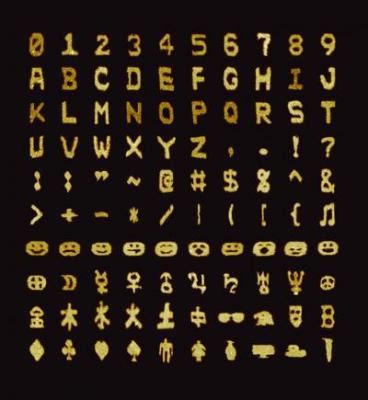A team of researchers headed by Peng Yin from the Wyss Institute for Biologically Inspired Engineering at Harvard University has devised a technique to construct intricate nanostructures using short synthetic DNA strands dubbed as single-stranded tiles (SSTs).

Single-stranded tiles (SSTs) are interlocking DNA "building blocks" that can be programmed to assemble themselves into precisely designed shapes, including letters, numbers, and emoticons. (credit: Wyss Institute at Harvard University)
SSTs are interlocking DNA building blocks resemble Legos and are programmable to self-assemble into accurately designed forms such as emoticons and letters. These building blocks hold potential to construct novel nanoscale devices like the one that directly delivers drugs to targeted sites. The technology has been reported in the online issue of the journal, Nature.
So far, researchers have been using a single lengthy biological DNA strand that functions as a backbone on which tiny strands are attached to its various segments to form different shapes. This technique is named as DNA origami.
On the other hand, Yin's group devised a building technique in which short synthetic DNA strands are used to eliminate the long scaffold strand. Each SST will interlock with the other one, if it has a matching DNA sequence. They do not interlock if complementary matches are not available. Likewise, a group of tiles can self-assemble into precise predetermined shapes by a sequence of interlocking local connections.
Making Structures with DNA "Building Blocks"
The research team demonstrated its method by creating just more than 100 specific designs, which include fonts, numbers, Chinese characters, utilizing hundreds of tiles for one structure having a size of 100 nm. The technique is simple, versatile and powerful. The SSTs show promise in medical applications as they are synthetic. They self-assemble to form drug-delivery systems capable of retaining their structural integrity until their entry into the targeted sites. They can be synthesized highly biocompatible as they are synthetic.
Disclaimer: The views expressed here are those of the author expressed in their private capacity and do not necessarily represent the views of AZoM.com Limited T/A AZoNetwork the owner and operator of this website. This disclaimer forms part of the Terms and conditions of use of this website.